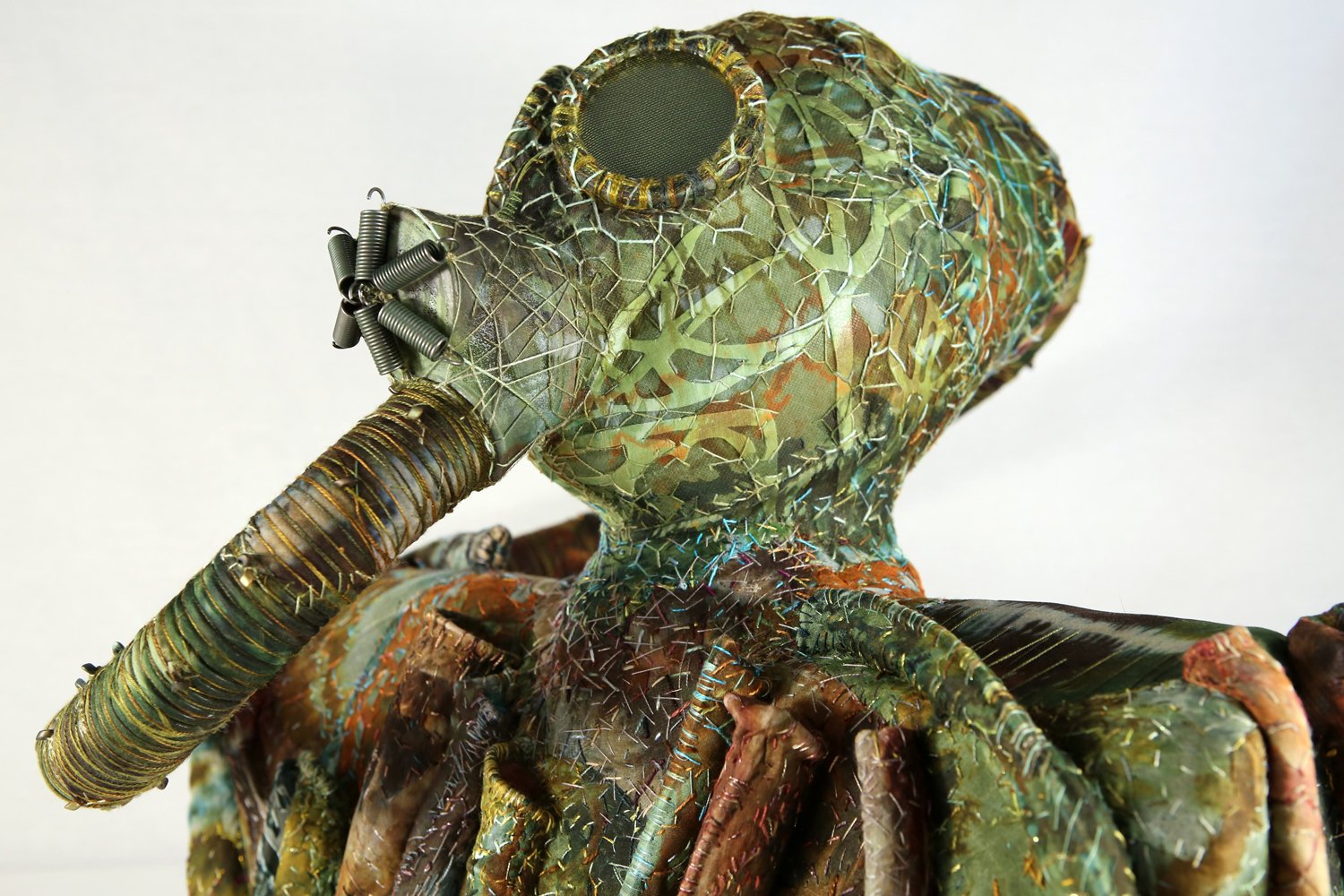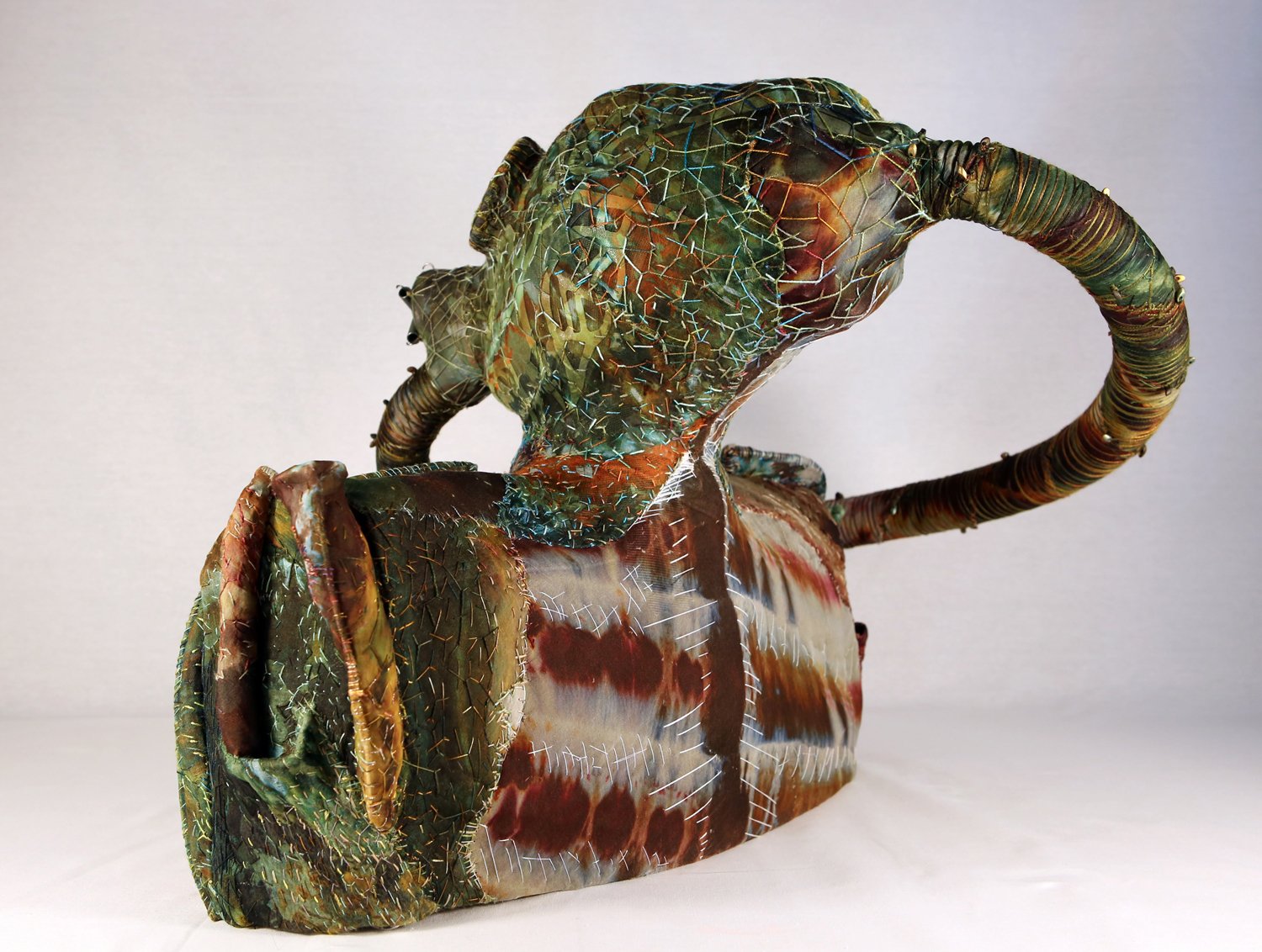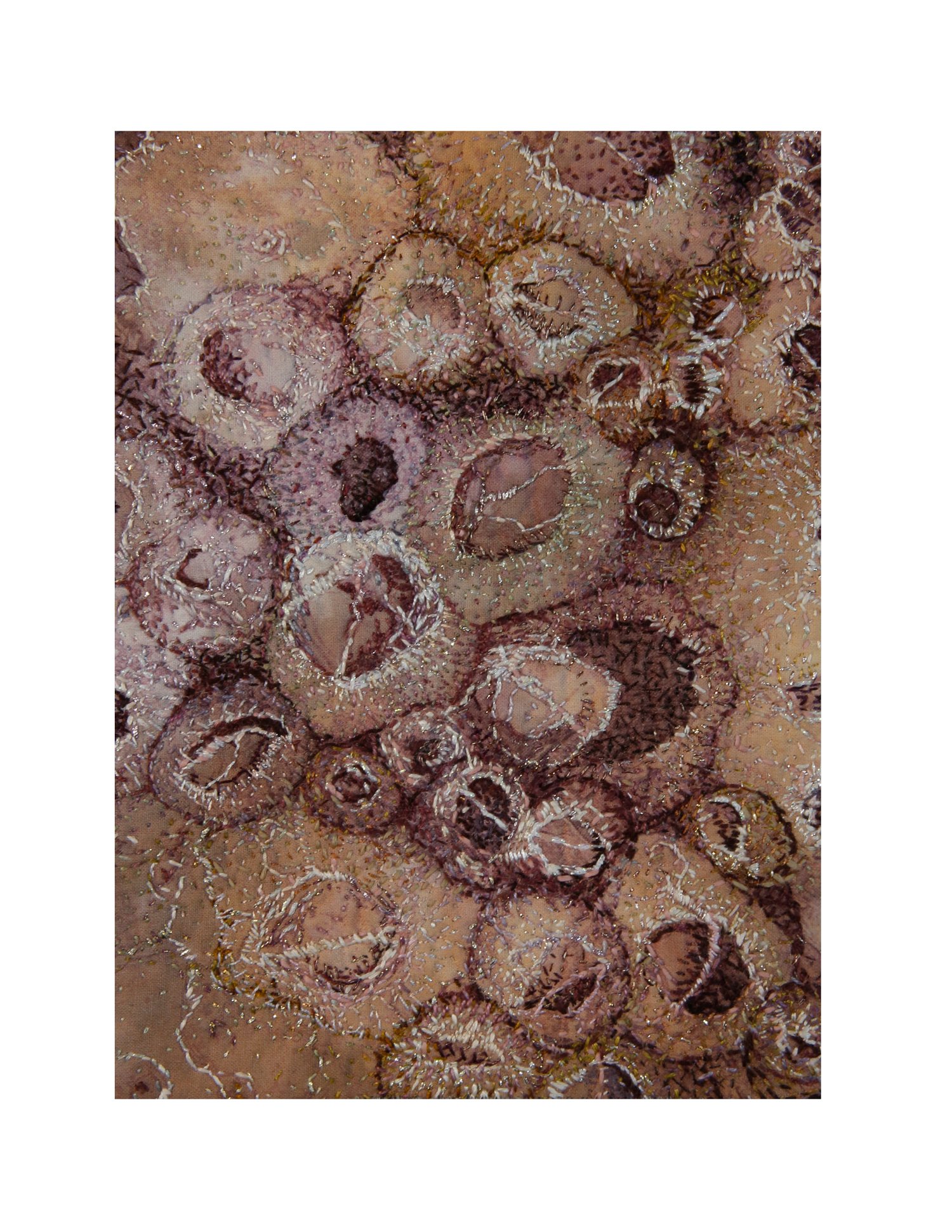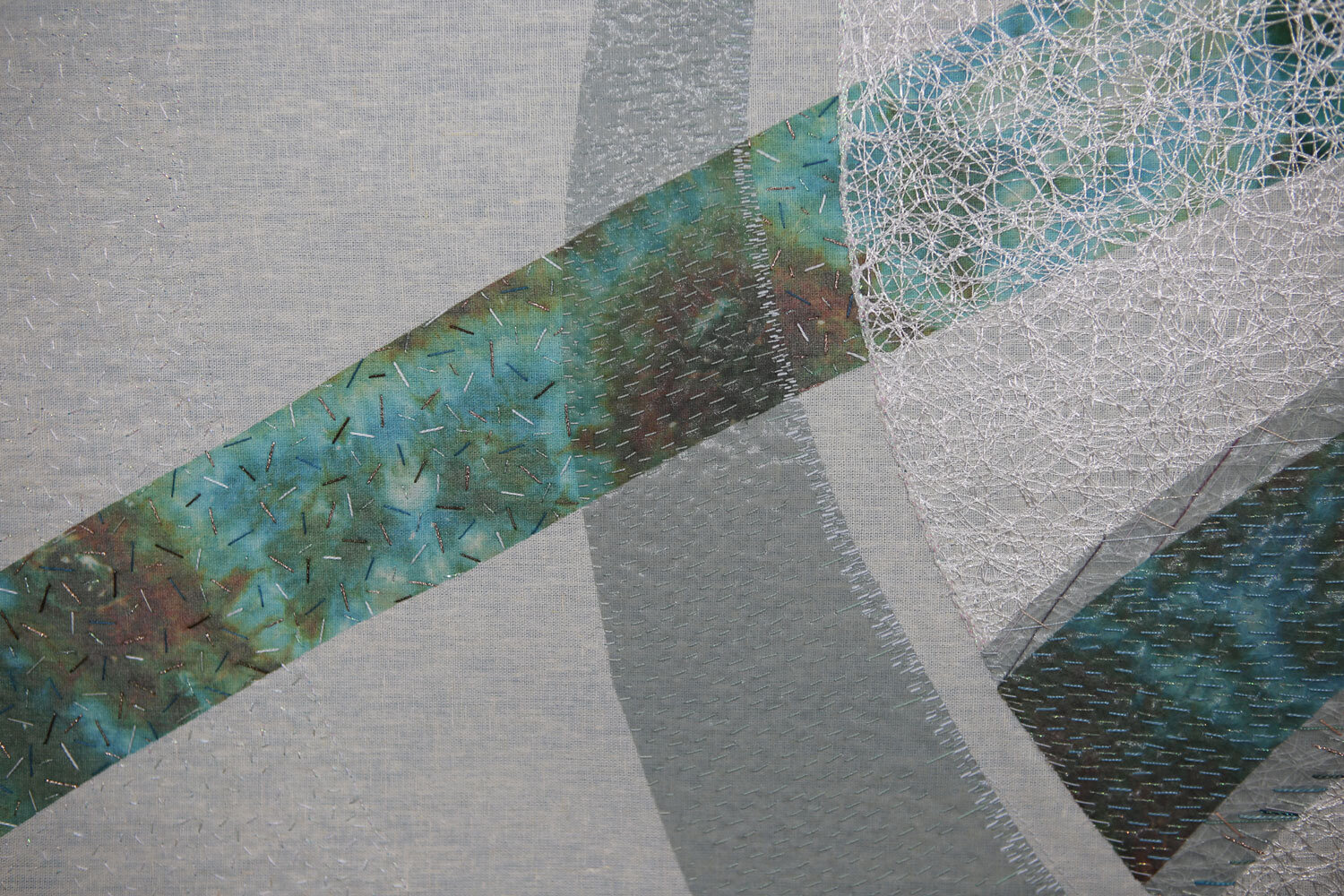I work on website updates almost every day, but somehow, I never get around to updating my own website. Although I am late in announcing, I am thrilled that my piece, EcoSarra, has been juried into the SAQA Global Exhibition StitchPunk.
©2023 Amanda Snavely
The Call for Entry asked the artists to “reimagine a world through an alternate, extraordinary timeline. Imagine our bodies merged with our devices or a world shared with sentient robots or other life forms.
What would a refrigerator, a clock, or even a lawn mower look like if it ran on steam power?
What sort of people would live on the streets of a decaying metropolis, starkly divided between haves and have-nots, with police drones patrolling above and neon lights cutting through the thick, dirty air?
Will science and technology free us from mundane daily chores, or enslave us to a global corporate master?
The opportunities are endless. Artists are invited to explore the science fiction worlds of cyberpunk, steampunk, dieselpunk, biopunk, atompunk, clockpunk, nanopunk, and more!” (SAQA Global)
©2023 Amanda Snavely
The title EcoSarra is a nod to Sarraceniaceae in my vision of Forest/Bio Punk.
EcoSarra
I gave up friends, family, and the outside world to create a future for my plants – my bioengineered family. The constant negative backlash over bioengineering forced me into my safe place, my world inside Green Lab. Along with my carnivorous babies, I grew, changed, and thrived as the outside world destroyed itself. My latest experiment, becoming a part of the chain, both absorbing carbon and creating my own form of oxygen may be the only way to survive the destruction. I look into the mirror and wonder if I will ever leave or want to leave. I become more and more like my babies every day. For now, we are safe inside Green Lab. Thankfully cockroaches did survive the disaster. Yum! Lunch!
Materials: Wire and mixed media armature, salvage army surplus, ice- dyed silk organza, various threads
Techniques: Armature building, assemblage, ice dying, hand-stitching
©2023 Amanda Snavely
The first venues scheduled for the exhibition tour are:
New England Quilt Museum, Lowell, Massachusetts: April 30 - July 13, 2024
Festival of Quilts, Birmingham, United Kingdom: August 1 - December 31, 2024
More info will be available in the coming months on the SAQA website.
©2023 Amanda Snavely








